AT THE WHEEL
By Thomas Connors
PHOTOGRAPHY BY JAMES GUSTIN
STYLED BY THERESA DEMARIA
HAIR AND MAKEUP BY LEANNA ERNEST
Former opera conductor, Matos, at the wheel wearing model’s own.
By Thomas Connors
PHOTOGRAPHY BY JAMES GUSTIN
STYLED BY THERESA DEMARIA
HAIR AND MAKEUP BY LEANNA ERNEST
Former opera conductor, Matos, at the wheel wearing model’s own.
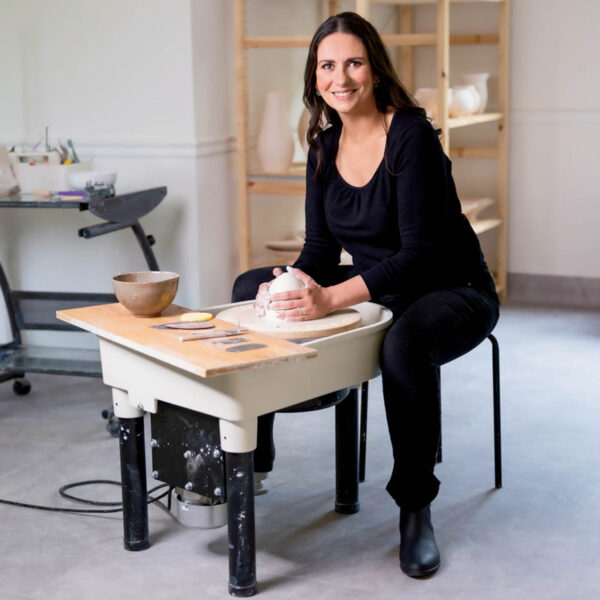
F. Scott Fitzgerald famously opined, “There are no second acts in American life.” But in reality, folks reinvent themselves all the time. Whether out of necessity or restlessness, they learn new skills, change their lifestyles, jump into new careers. Count Lucia Matos among them. Trained as a musician, she found her conducting career curtailed when she developed hearing issues. The last time she held a baton in front of an orchestra was in 2018 with the Illinois Valley Symphony, of which she was the Music Director for nine years. While she continues a life in music, teaching conducting and music theory as an associate professor at the Northern Illinois University School of Music, Matos has taken on a new artistic challenge.
“One day, after watching a video about Portugal that showed its beautiful ceramic tiles, my husband, Alex—a painter—said that he would like to try to make them, and for that, he would need to get a little kiln,” shares Matos. He never pursued the idea, but she did.
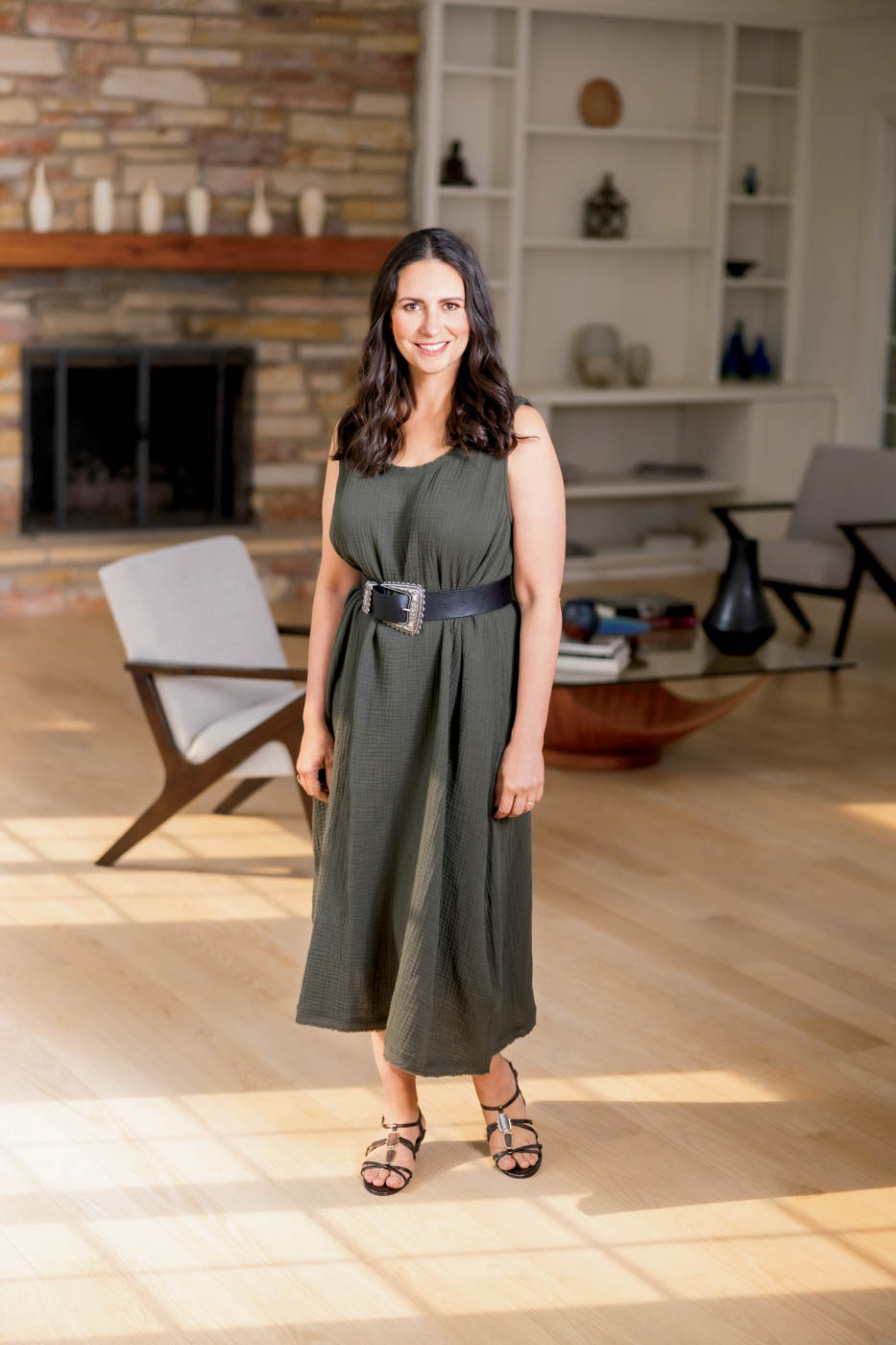
Matos, who was born in Brazil, was always strongly drawn to music. She remembers being captivated at age 2 by a cousin playing the piano. A few years later, she begged her parents for piano lessons. “Later, majoring in music at Universidade Estadual de Campinas in São Paulo, I had the opportunity to conduct a professional orchestra, and that day changed my life forever,” says Matos. “I had memorized Schubert’s “Unfinished Symphony,” and as I gave the preparation for the beginning of the symphony and heard the cellos and basses with their deep, resonating tones, I knew that this was what I wanted to do for the rest of my life.”
Giving up conducting wasn’t easy. “The three years between my last orchestra concert and my first pottery class were extremely challenging. There was a lot of grief, and I felt lost. I recall writing down my intentions for the year on New Year’s Eve 2021, with ‘Find Purpose’ being first and foremost. It was more of a wish than an intention at the time, but that wish became a reality that summer when I discovered ceramics.”
Matos began her journey in ceramics studying with Neil Estrick in Grayslake and Kristen Walk at Harper College. Week-long workshops with veteran potters Sarah Wells Rolland in North Carolina and Danny Meisinger in Kansas amplified her education. “From the very beginning, I embraced clay with much dedication,” says Matos who lives in South Barrington with her husband and three stepchildren. “The process of creating handmade ceramics is intricate and involves multiple steps—shaping the wet clay at the wheel, letting it dry, trimming the form, firing it for the first time, glazing it and firing it for a second time. The glaze is an art in itself. The combination of minerals, oxygen, and heat determines the chemical reactions and physical changes that happen. You can spend a lifetime studying and experimenting with it.”
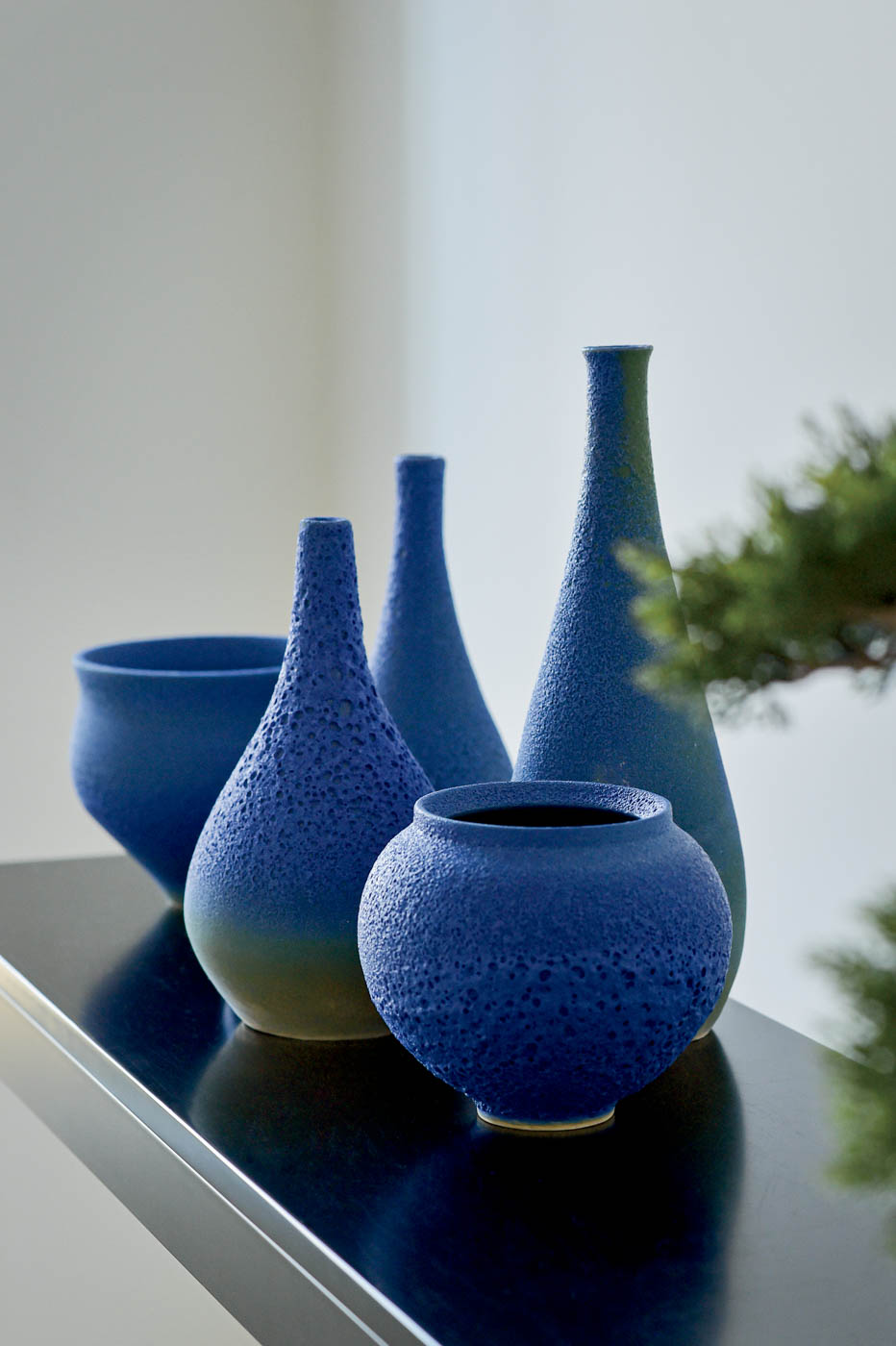
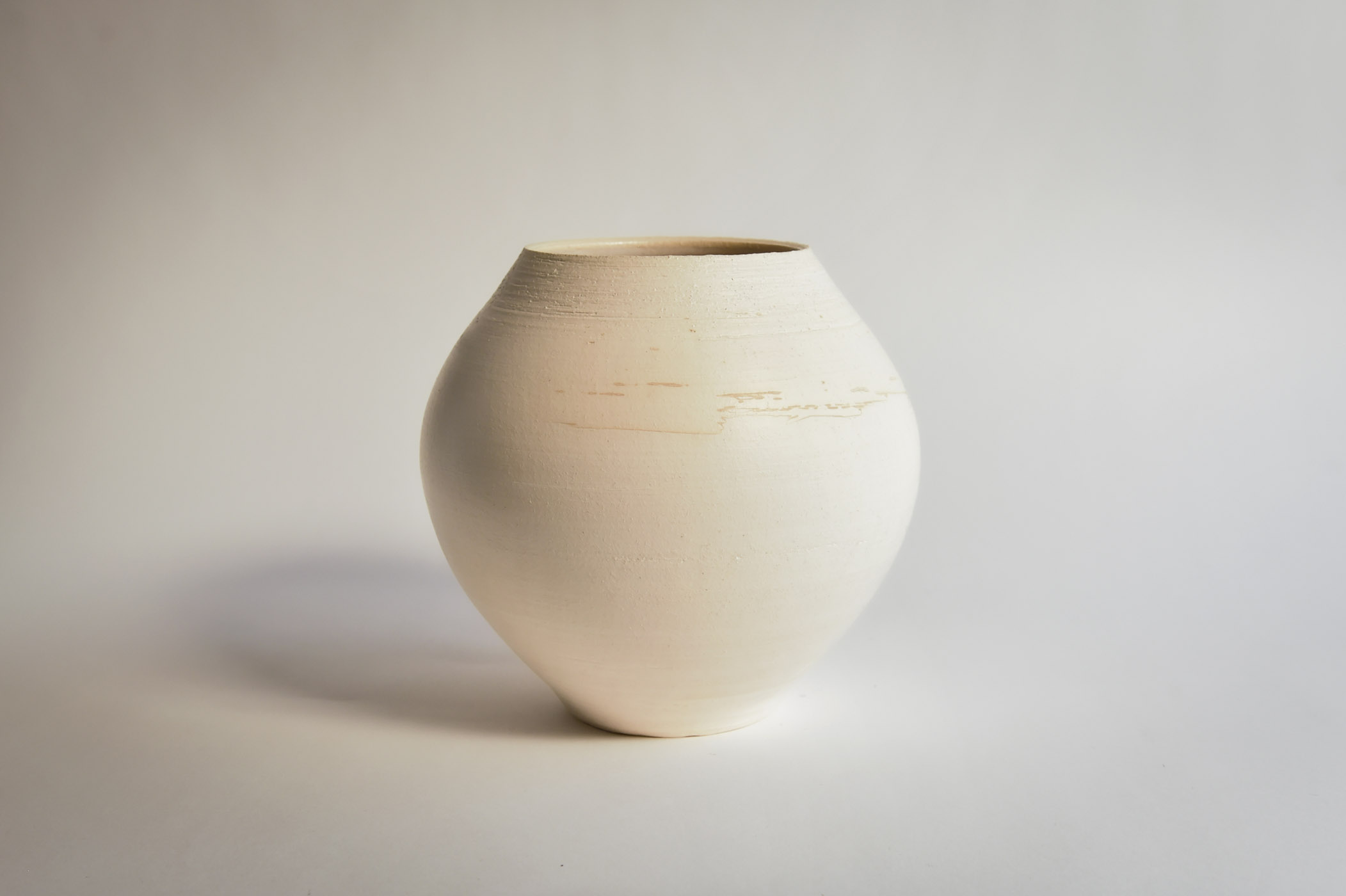
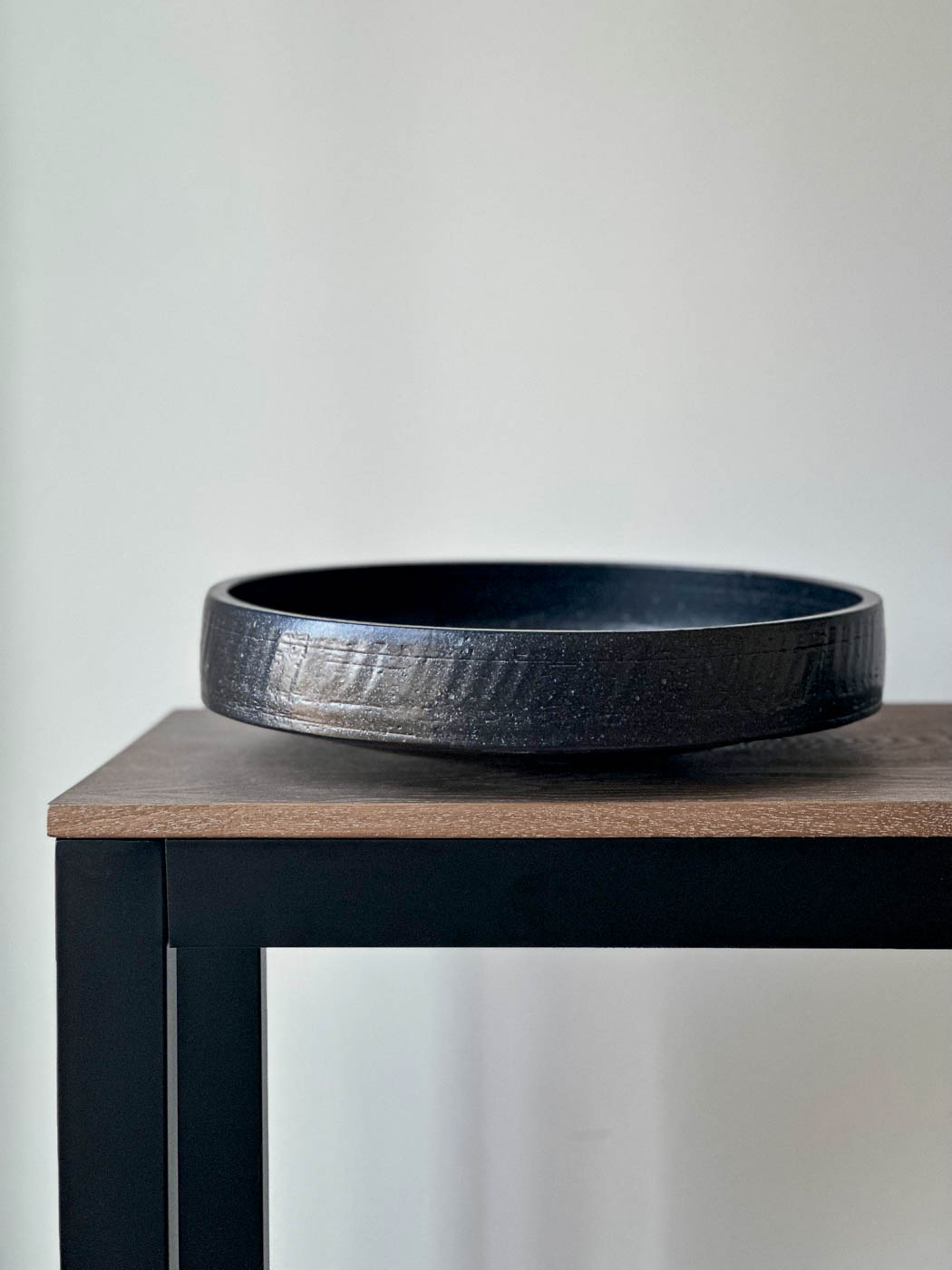
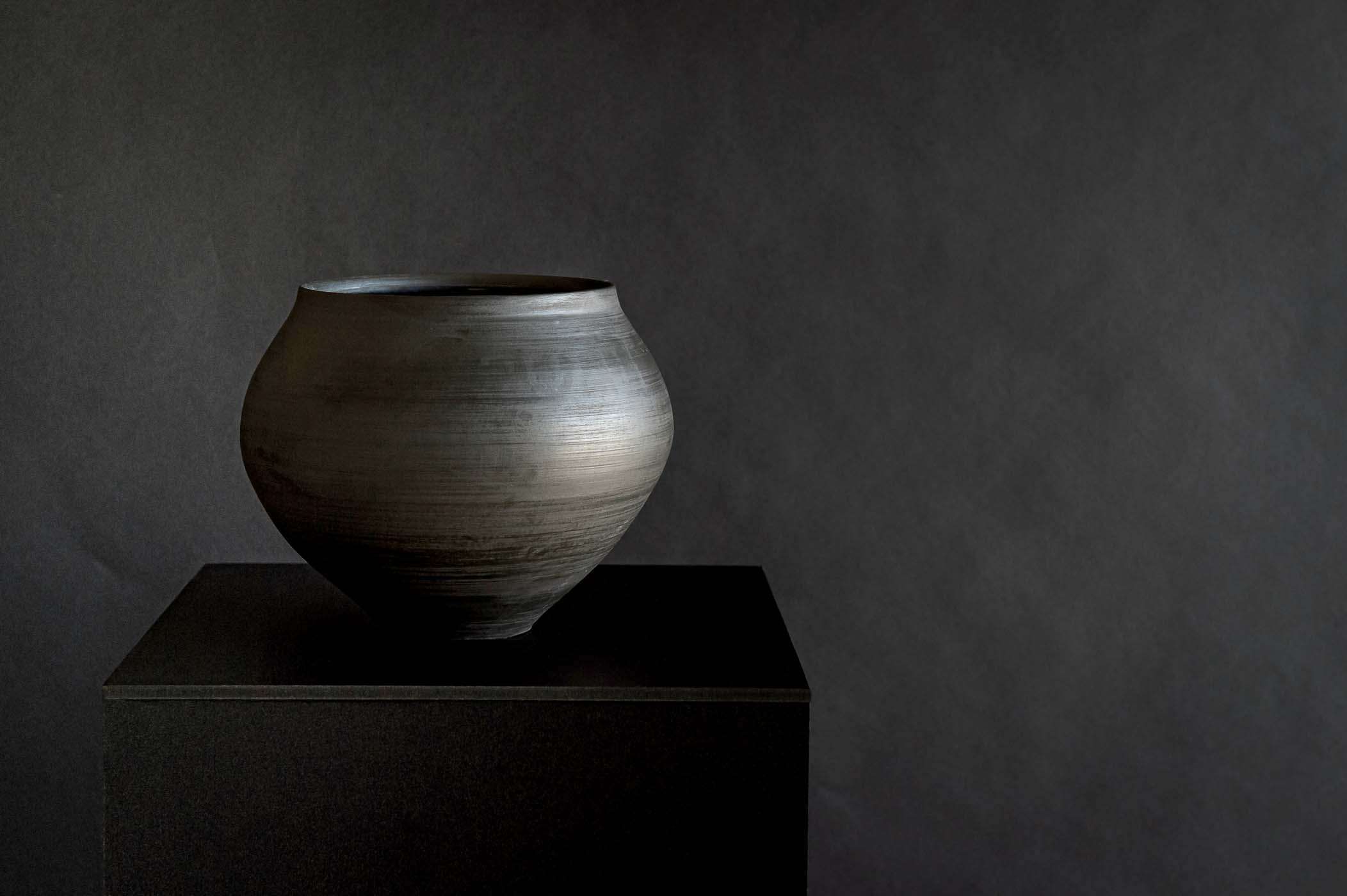
Working primarily at the wheel, Matos creates one-of-a-kind vessels, bowl-like forms that open like a flower, rounded pieces that beg to be held in two hands, and tapered, bottle-like objects. In color, these range from not-quite-white to a silvery gray, to a deep blue just a shade or two away from International Klein Blue, the hue formulated by French artist Yves Klein, in the 1960s. Sometimes, she sketches out an idea in the notebook she carries wherever she goes. At others, she improvises at the wheel. “I do love those sessions,” she says, “when I am completely free.” No matter what shape the clay eventually takes, Matos hopes her pieces stand as pleasing, self-possessed companions that provide relief from our “technology-dominated, over-stimulated lives.”
Although Matos no longer wields a baton as she once did, working with clay has provided her an expressive outlet that affords a similar personal satisfaction. “Both require considerable discipline and daily commitment to develop and improve your technique, and they also evoke similar feelings. Being in front of an orchestra, completely immersed in the music, is an incredible sensation. At that moment, everything else in the world fades away. I experience that same feeling when working at the wheel. It’s just you and the clay, and time stands still.”
For more information, visit luciamatos.com.
Sign Up for the JWC Media Email